20D.40.45 Circulation Design Standards.
20D.40.45-010 Purpose.
The purpose of this section is to establish criteria for street design, transit service, pedestrian and vehicle areas. (Ord. 1993)
20D.40.45-020 Street Design.
(1) Intent.
(a) To balance traffic flow, transit, pedestrian and bicycle use, safety, and to create attractive and effective streetscapes;
(b) To create attractive and effective streetscapes that provide safe linkages to public facilities, shorelines, and other public open spaces, and that complement the aesthetics of adjacent natural features and buildings.
(2) Design Criteria.
(a) Design streets to address terrain, intersection configurations, and connections to streets or adjacent sites.
(b) Minimize steep gradients in circulation patterns.
(c) Promote safety through adequate sight distance, limited driveways on busy streets, and avoidance of difficult turning patterns.
(d) Allow safe, efficient access for emergency vehicles.
(e) Discourage through-traffic and long curvilinear cul-de-sacs, while assuring adequate circulation between and through neighborhoods.
(f) Accommodate transit on arterial streets and, where appropriate, within internal circulation systems. Width, geometry, slopes, and construction materials should be suitable for transit service. Transit stops should be included at appropriate intervals.
(g) Where possible, streets and internal circulation systems should frame vistas of retail areas, public buildings, parks, open spaces, and natural features, especially Lake Sammamish, the Sammamish River, Bear and Evans Creeks, and forested slopes.
(h) Intersections should be designed to facilitate both pedestrian and vehicular movement.
(i) Provide shade trees along all streets. Street trees spacing and tree species and plantings techniques should be selected to create a unified image for the street, provide an effective canopy, avoid sidewalk damage, and minimize water consumption. Drip irrigation systems are encouraged. Trees should vary along different streets to prevent excessive planting of any one species.
(j) Within the shoreline jurisdiction, streets and bridges should be designed to enhance shoreline visual, physical and cultural access by incorporating special design features, such as viewpoints, gateway design elements, street furniture, decorative lighting, landscaping, public art or street graphics. (Ord. 2486; Ord. 1993)
20D.40.45-030 Transit.
(1) Intent.
(a) To encourage transit use through building and site design;
(b) To provide safe and continuous pedestrian access to transit facilities.
(2) Design Criteria.
(a) Provide transit stops and improvements where appropriate to the intensity of use and expected demand. Transit stops should include shelters and eight-foot sidewalks. The area devoted to shelters and wider sidewalks may be included in setbacks and may be counted toward required landscaping.
(b) Along high traffic volume streets, consider a number of transit stop alternatives such as building “passenger bulbs” or transit stops where sidewalks extend to the traffic sidewalk lane. Bulbs allow transit to stop easily, and people are prevented from parking at the stop.
(c) Provide direct access to transit stops from buildings via defined, safe pathway systems.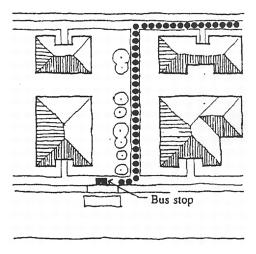
Figure 58: Transit Design Criteria (2)(c) of this section.
Pedestrian access to transit provided across the block.
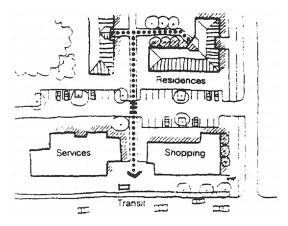
Figure 59: Transit Design Criteria (2)(c) and (2)(d) of this section.
Mixed-use development with pedestrian access to transit.
(d) Locate parking lots to the side and rear of buildings. Avoid making pedestrians walk across expansive parking lots to reach transit stops.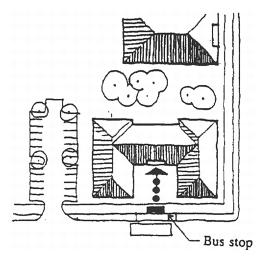
Figure 60: Transit Circulation Criteria (2)(e) of this section.
Building entrance oriented to street and transit stop.
(e) Provide covered or enclosed waiting areas where possible. Where a building is located close to a transit stop, design the lobby so that residents or employees can wait for transit in the lobby and see the transit stop and the transit vehicle coming down the street. If a building does not have a lobby, include covered and lighted entrance where residents can wait for transit out of the weather. If either a lobby or covered entrance does not provide an adequate waiting area, work with King County/Metro to provide a bus shelter at the closest transit stop.
(f) Focus the location of buildings onsite to concentrate present and future transit use and to encourage residential use of transit.
(g) Orient buildings toward the street and locate them close to existing or proposed transit stops. Minimize walking distances between buildings and transit stops. Building entries should be within 1,000 feet of the transit stop.
(h) If the development will have a retail use, locate the storefront close to the transit stop.
(i) Security walls and fences should include gates that employees can open from both sides to provide access to and from transit stops. (Ord. 1993)
20D.40.45-040 Pedestrian and Bicycle Circulation.
(1) Intent.
(a) To improve the pedestrian and bicycling environment by making it easier, safer, and more comfortable to walk or ride among residences, to businesses, to the street sidewalk, to transit stops, through parking lots, to adjacent properties, and connections throughout the City;
(b) To enhance access to on-and off-site open space areas, shoreline access areas, and pedestrian/bicycle paths.
(2) Design Criteria.
(a) Connect building entries to entries of other buildings within the development, to nearby residential complexes, and to existing or planned sidewalks and crosswalks.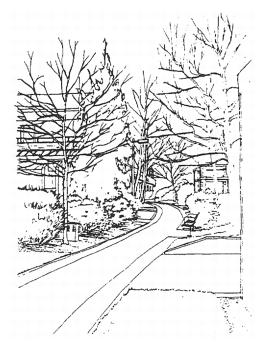
Figure 61: Pedestrian and Bicycle Facilities Criteria (2)(a) of this section.
The pedestrian path in this commercial development links units and promotes enjoyment of the common open space.
(b) Enhance site access and access to adjacent sites by linking paths, driveways and parking areas to adjoining public or private open space, paths, crosswalks and transit stops. (See Comprehensive Plan Recreation and Open Space Trails Plan, Shoreline Public Access Map, and Redmond City Center Bicycle Plan.)
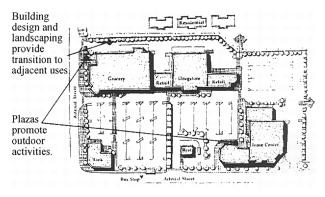
Figure 62: Pedestrian and Bicycle Facilities Criteria (2)(b) of this section.
Pedestrian linkages directly connect buildings with parking and the site to adjacent uses.
(c) Provide easements for pedestrian access to facilitate the future extension of these paths as adjoining properties are improved.
(d) Provide for access needs of the physically challenged as required by the Washington State Administrative Code (Chapter 51-30 WAC).
(e) Encourage pedestrian use and movement by providing walkways. Design efficient walkways by:
(i) Reducing walkway distances and providing short cuts;
(ii) Eliminating pedestrian barriers and obstacles, such as providing steps and ramps across retaining walls and slopes where possible, to allow for pedestrian movement throughout the site. (Gates should be provided to breech fences if they impede pedestrian movement to shopping, transit and other common activities);
(iii) Assuring continuity of walkways;
(iv) Providing protection from wind and rain, especially at main building entrances and over public walkways;
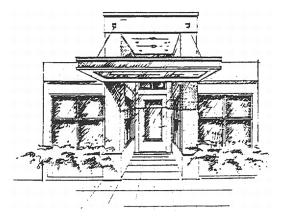
Figure 63: Pedestrian and Bicycle Facilities Criteria (2)(e)(iv) of this section.
Weather protection at building entry extends over the public sidewalk.
(v) Providing adequate lighting where nighttime use exists or is encouraged; and
(vi) Using walkway surfaces which are comfortable to walk on and durable.
(f) Improve the safety and appearance of walkways that cross parking lots and driveways by varying the texture and color of walkway paving materials.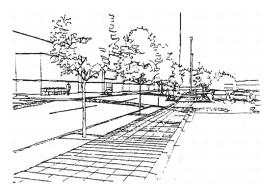
Figure 64: Pedestrian and Bicycle Facilities Criteria (2)(f) of this section.
This development provides well-defined connections from parking to buildings, from the street to the building and between different shops on the site.
(g) Existing informal paths should be recognized and improved to ensure connection to and through sites and access to parks and open space.
(h) Pedestrian circulation plans should consider incorporating the following techniques to increase the personal safety of pedestrians:
(i) Avoid sharp “blind” corners, especially on stairways and corridors where potential assailants can predict movement.
(ii) Avoid sudden changes in grade that reduce sight lines on pathways.
(iii) Design openings in barriers along pathways to allow sight lines into adjacent property.
(iv) Consider installing convex security mirrors where sight lines are impeded along pathways.
(v) Avoid tunnels, passages, bridges, or staircases where pedestrians cannot see activity on the far side or where alternative paths are not available. (Ord. 2486; Ord. 1993)
20D.40.45-050 Vehicle Entrances and Driveways.
(1) Intent.
(a) To provide safe, convenient vehicular access to sites without diminishing pedestrian access and visual qualities.
(2) Design Criteria.
(a) Minimize parking lot entrances, driveways, and other vehicle access routes onto private property from a public right-of-way.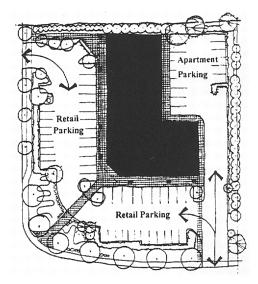
Figure 65: Vehicle Entrances and Driveways Criteria (2)(a) and (2)(c) of this section.
Limited and shared entries.
(b) Driveway lanes crossing a public sidewalk should be no wider than the minimum required per entry or exit lane. The City may impose additional restrictions to parking lot and vehicle access point location to reduce impacts to public safety, pedestrian movement, on-street vehicle circulation, and visual qualities.
(c) Joint driveways between adjacent developments should be provided when the proposal meets the following:
(i) Joint access is legally available;
(ii) The proposal promotes safety for pedestrians and automobiles; and
(iii) The proposal promotes proper dispersal of traffic mode and behavior to support traffic management objectives.
(d) Minimize conflicts between entries and vehicle parking and maneuvering areas. (Ord. 1993)
20D.40.45-060 Parking Lot Location and Design.
(1) Intent.
(a) To encourage parking design that provides for distribution of parking in a balanced manner across the project site plan, avoiding where possible a concentration of all of the parking in front of the building;
(b) To provide for clear internal vehicle circulation patterns and consideration of pedestrian walkways in parking lots;
(c) To set standards for paving, lighting, and other design elements;
(d) To provide for joint entrances and exits;
(e) To reduce the negative impacts of parking and circulation facilities on highly visible public open spaces, such as shorelines and other natural open spaces.
(2) Design Criteria.
(a) Locate parking where possible behind buildings and away from areas of high public visibility and shorelines.
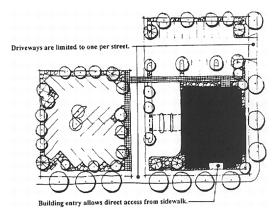
Figure 66: Parking Lot Location and Design Criteria (2)(a) of this section and Vehicles Entrances Criteria RCDG 20D.40.45-050(2)(a).
The building location at the corner minimizes the visual impact of the parking lot.
(b) Integrate parking area design with landscape design in a way that reduces the visual impact of impervious surfaces and provides adequate screening of parking from public view, while allowing sufficient visibility to enhance safety. Parking areas should provide for landscaping next to buildings and alongside walkways.
(c) Reduce pavement areas for vehicular use by avoiding the use of parking aisles with parking located only along one side.
(d) Convenient, marked pedestrian access shall be provided from the interior of parking areas and street front walkways.
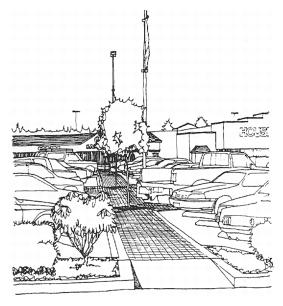
Figure 67: Parking Lot Location and Design Criteria (2)(d) of this section.
A well-designed pedestrian walkway within a shopping center parking lot.
(Ord. 2486; Ord. 1993)


